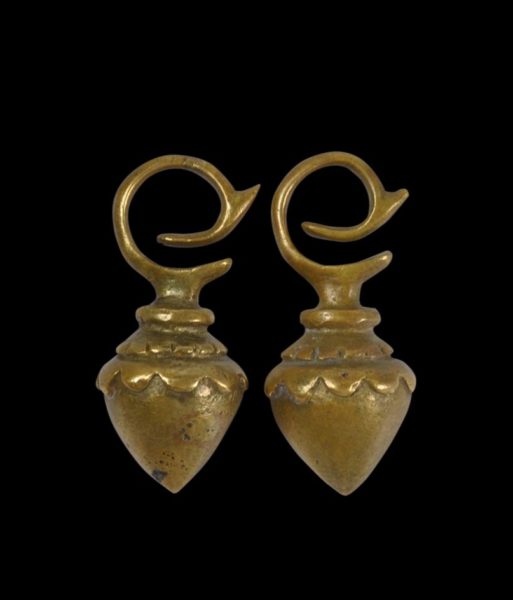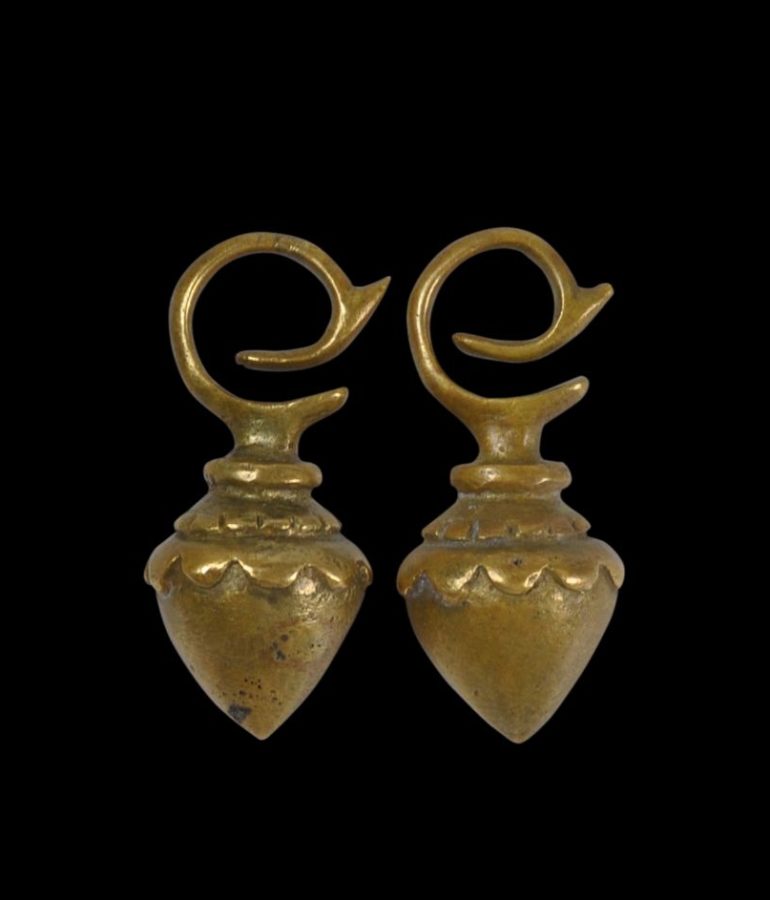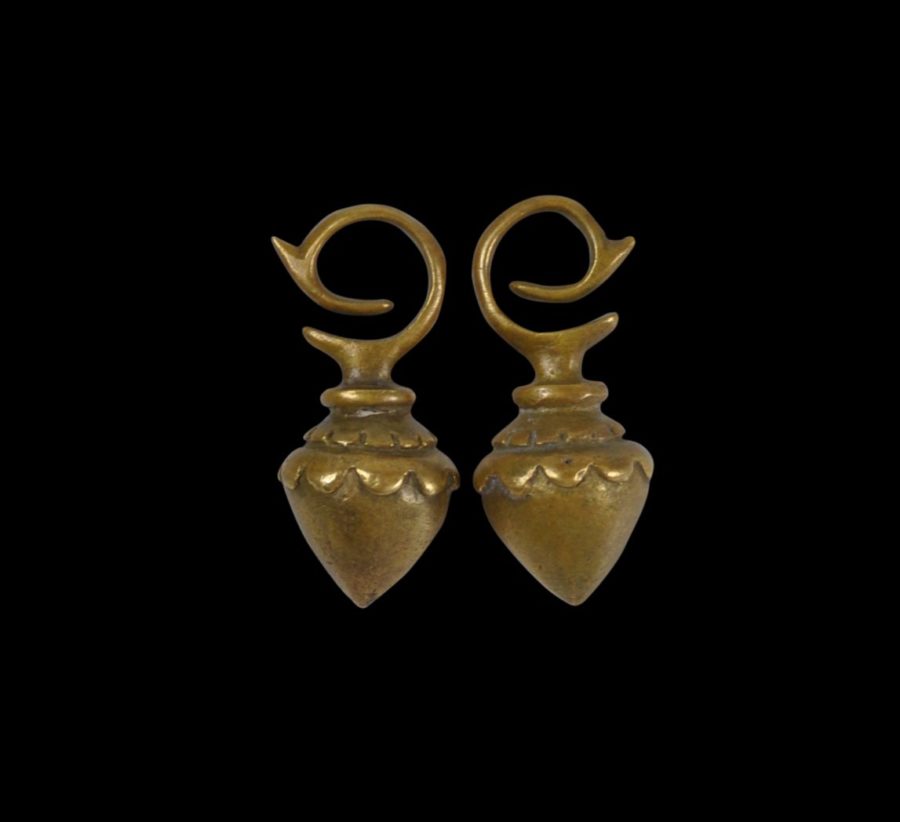Each of these earrings or ear pendants has been cast from solid brass. They have been cast in an acorn shape with a double row of petal-like crenulations towards their tops giving them the overall appearance of large flower buds.
Ear pendants of this weight allowed male and female Dayak tribes-people to stretch their earlobes to beyond their shoulders. This pair came from Sarawak, on the Malaysian side of the island of Borneo, but Dayak groups in Kalimantan on the Indonesian side also used such ear pendants.
Ear ornaments of brass were signs of prestige and power.
Earrings of this size and weight would have been reserved for a person of great prestige. They would have been used to stretch the ear lobes to a remarkable length. Thereafter, great care was needed to prevent the ear lobe from breaking. Women tended to stretch their ear lobes much more than men: it was considered effeminate for a Dayak man to have lobes stretched beyond the shoulders. Today, the practice of elongating the earlobes has largely died out among the Dayaks.
See Rodgers (1995, p. 280) and Carpenter (2011, p. 155) for related if plainer pairs.
The examples here are in excellent condition and have a good ‘feel’ in the hand.
They were acquired in the UK and most probably came to the UK during colonial times.
Modern reproductions of this style of ear pendant abound but this pair has the appropriate patina and provenance.
References
Brinkgreve, F., & D.J. Stuart-Fox (eds), Living with Indonesian Art: The Frits Liefkes Collection, Rijksmuseum Volkenkunde, 2013.
Carpenter, B., Ethnic Jewellery from Indonesia: Continuity and Evolution, Editions Didier Millet, 2011.
Hoek, C., et al, Ethnic Jewellery: From Africa, Asia and Pacific Islands, Pepin Press, 2004.
Richter, A., The Jewelry of Southeast Asia, Thames & Hudson, 2000.
Rodgers, S., Power and Gold: Jewelry from Indonesia, Malaysia and the Philippines, The Barbier-Mueller Museum, Geneva, 3rd ed. 1995.




